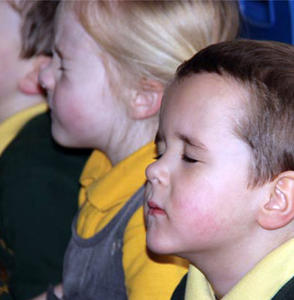THE COMMUNITY OF CONTEMPLATION
This past weekend, I attended the International Symposium for Contemplative Studies in Boston. There were lots of luminaries in the fields of neuroscience, psychology, education, philosophy, and the humanities. Counted among these were the Dalai Llama, Jon Kabat-Zinn, Daniel Goleman, Arianna Huffington, and so many more whose are well known to those in the field, reflecting the explosion really of mindfulness into all aspects of our modern society.
Some presenters shared results of mindfulness programs they have implemented in particular clinical settings, or in business, and several neuroscientists provided the latest in their research findings on what is happening in the brain during contemplative practices and where in the brain it is happening. The goal of all this being the very mission of the conference: to “advance our understanding of the human mind, reduce human suffering, and enhance our well-being.”
Perhaps needless to say, among the 1700 participants, there was a palpable energy, an electric environment eager to engage with this multivalent subject of contemplation. As a long time student and teacher of contemplative practices, it felt akin to my all-time favorite third grade class trip where we went to a historic New England village. I remember waking up that morning excited with the sense that there would be new to things to learn, ideas and practices that made up their way of life that were ancient and those that were contemporary to them in their place and time. Contemporary and contemplation not coincidentally sharing the root, ‘contemp’, which means ‘together with time.’ This idea of being present to the current moment in ways that speak to our interior lives and the life of our communities within the wider society.
This connection is a vital one. While contemplation and contemplative practices have become synonymous with meditation and a sense of personal transformation (and in some traditions this includes prayer as well) AND this can be profoundly true; this definition is only a part of the larger living meaning of contemplation. It must begin with one’s self, but ultimately goes beyond one’s self, to serve.
Contemplation, our modern definition stemming from the Latin ‘contemplatio.’ translates with broad concepts: thinking deeply and at length, examining, meditating, or looking thoughtfully. Yet these roots grow from another word, ‘templum’, which is a piece of ground consecrated for a building or space for worship. These ideas are both prisms of the diamond of contemplation, containing a process personal and worthy, that touches in to our deepest core and brings us together in community for a higher purpose.
Taking this language further back even still we discover that the Proto-Indo-European base ‘tem’ means ‘to cut’ and the base ‘temp’ means to stretch and often referred to a “place reserved or cut out” as a cleared space in front of an altar.
We are cutting down and reshaping ourselves as the early pioneers at that long ago field trip depicted and as a society we continue to cut down and to stretch ourselves and make for us individually and collectively a clearing space.
In the process of observing IN THE MOMENT, whether that be thoughts, feelings, sounds, our breath, not adding any judgment to these observations, we too are paring down and making room for what is worthwhile. As the early pioneers who learned to thrive depicted on that long ago field trip, we too are stretching the limits of what is possible in our human experience.
“The ultimate value of life depends upon awareness and the power of contemplation rather than upon mere survival.”- Artistotle



